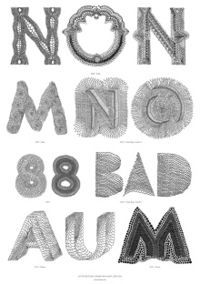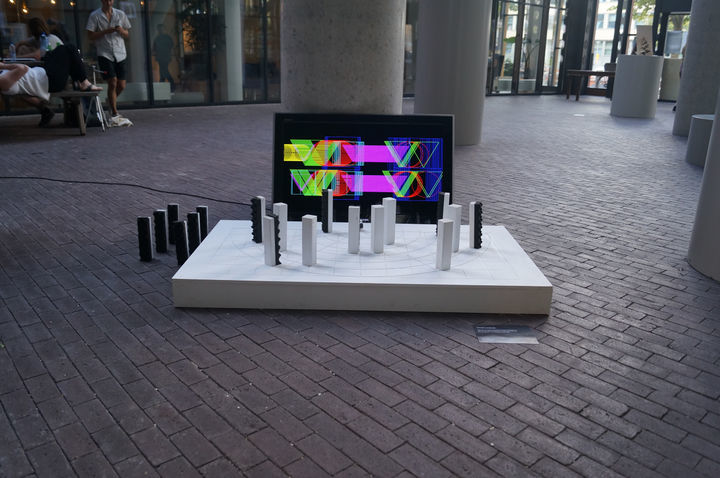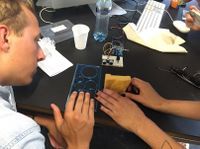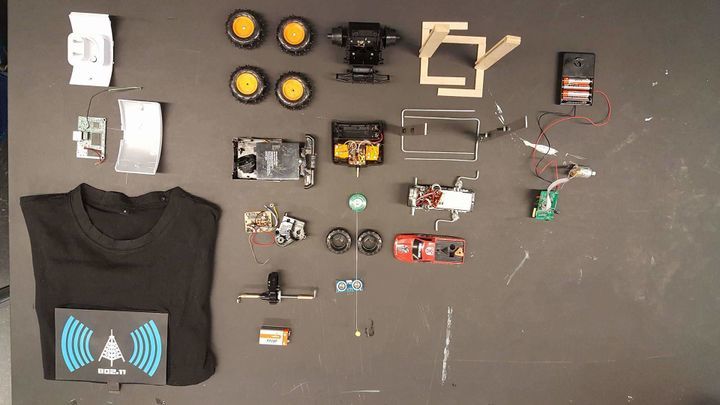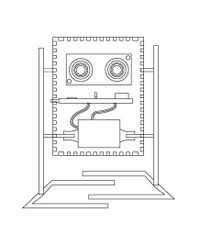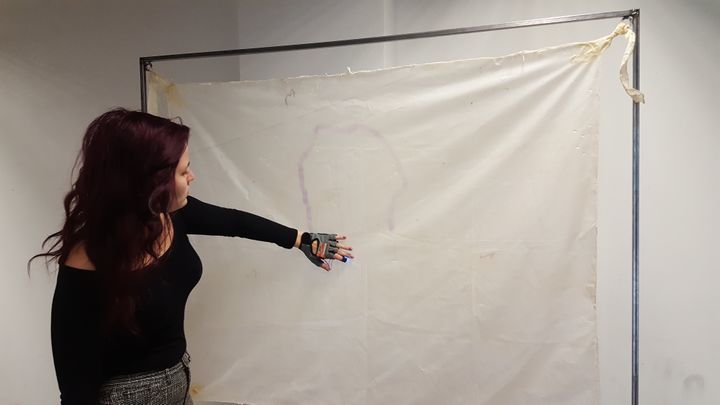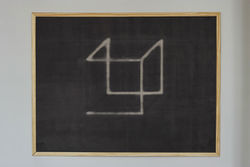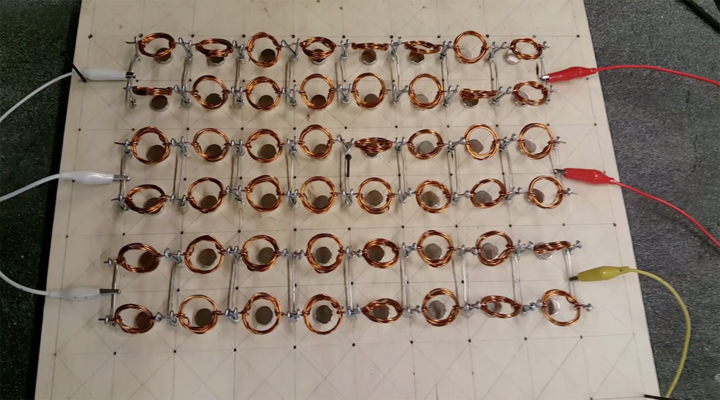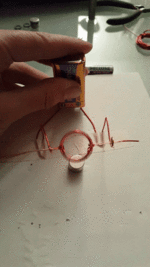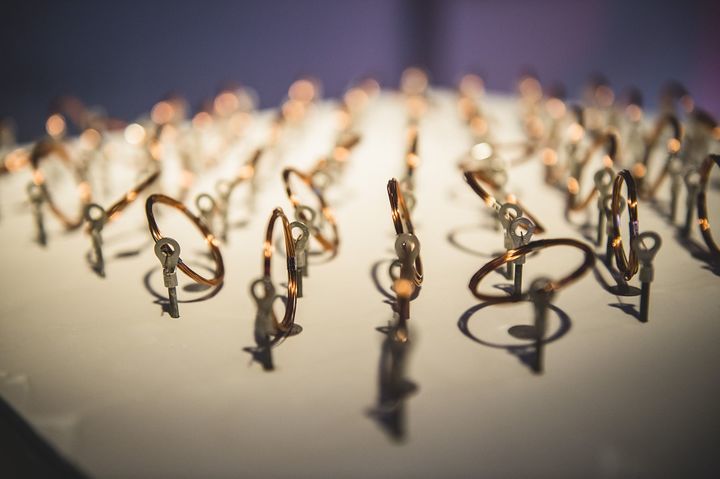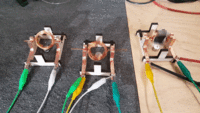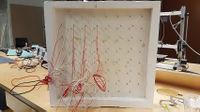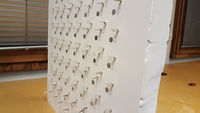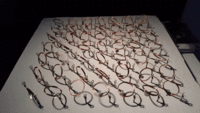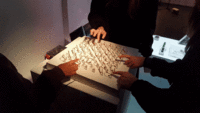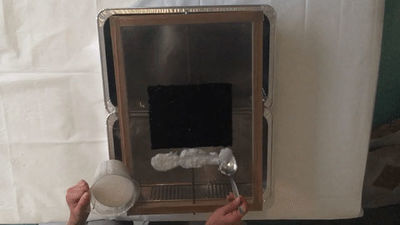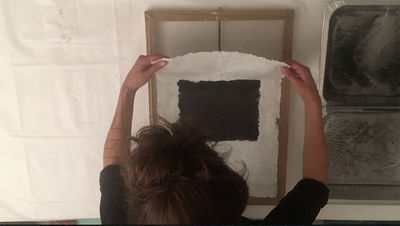Research Wiki Page
Contents
Intro
'Who are you?' Said the Caterpillar, were Alice replied:
'I – I hardly know, sir, just at present–at least I know who
I WAS when I got up this morning, but I think I must have
been changed several times since then.'
This confusion Alice (in Wonderland) experience, after a long trip down the tunnel ending in an obscure
unknown land and turning into so many different sizes a day, is exactly how I experienced these last
few years at school. I find knowing who I am and what it is that I do difficult, because my interests
changes like day and night.
In my first year I called myself a Graphic Designer, just as my study labelled. During my second year
I developed my drawing skills more and more, what made me call myself a Graphic Designer/Illustrator.
I establish a signature style and that seemed to be recognized as well. I managed to get paid assignments.
It really felt that: ‘who I am’ seemed much clearer back then. The ‘slash’ that’s trying real hard to put these
two occupations together didn’t really bother me yet.
This year, my last, I’ve chosen the minor Digital Craft. It was mainly the crafting that draw my attention.
The idea of working with my hands, the ‘do first think later’ state of mind, is what made me enthusiastic.
I was a bit insecure about the digital part, because I never felt much for it. My work, made digital or not,
has always a handmade feel and/or with respect for tradition. But considering the digital era we live in,
I felt that I should master the thing a can then let go. During the course I began to appreciate the ‘digital’ part more.
I discovered that technology can be a great tool to my interest. My somewhat crazy ideas that before looked
impossible to others suddenly became possible. I reached to a point that I even build my own machines and tools now.
So each year I learn more and more interests occurred, but this also entailed more confusion.
I mean, how many more slashes can I add?
Being labeled a Graphic Designer feels a little like being called a draftsman, color artist, desktop layout artist
or something else that does not even come close to describing what I do. I believe this is likely true of most
of my fellow class mates coming from the same department. The profession Graphic Design is becoming
a broader understanding and Digital Craft, being an autonomous minor, only made that clearer for me.
Looking around me I see a world with each day more independent artists, shop owners and freelancers.
I call them centipedes. Much different than a few years ago, where you had one big company and each had
his own specialty. It seems that specialization is disappearing and that we no longer in need for it anymore.
Things need to go faster and cheaper. So why not pay one person to do the job of many.
There are just a few contemporary artists that I admire, who found a way to cooperate within the digital era.
And one of my favorites would be Hansje van Halem.
In 2003, Dutch graphic designer Hansje van Halem graduated from the Gerrit Rietveld Academy and started
her own studio in Amsterdam. Specialized in typography and book design with respect for tradition and
interested in the work of the hand in a digital age. Hansje creates letters, textures and patterns, both digitally
and manually. Her drawings have more to do with systems, structures and textures than it has to do with the
letter shapes itself. The tension between a systematic approach, readability and (ir)regularity is what appeals to her.
It’s not just the end results that are amazing, but especially her work process is what fascinates me. During her
TED talk she tells more about her discovery’s during a work process. For example, her first encounter with
a pen tablet she used to trace letters. Here her enthusiasm quickly turned into disappointment. Because she
has this big love for fine detail and the pen tablet (especially in 2003) wasn’t that accurate as the real pen on paper.
But she zoomed in on her traced letter and discovered a beautiful scratchy textured letter. This scratchy letter became
her graduation project and is still in use and evolving over the years. I think it’s beautiful how she used the handicap
of the pen and established to design a timeless font.
To my own surprise (after finishing this report and reading it back) my work approach is a lot similar to hers.
Minor Projects
I have a big love for handmade work. The labor, repetition, small details in texture and the visible process of changing.
After reading The Craftsmen by Richard Sennett I began to understand this even more. All craftsmanship is
quality-driven work; the aspiration for quality will drive a craftsman to improve, to get better rather than to get by.
I can relate to that. I become more engaged in the work and myself, the satisfaction of working is my reward. I can control
my own actions at work and develop skills within the work process. It is the freedom to experiment.
I experience most inspiration during the work process, where I always try to do first and think later. That’s why this
minor worked so well for me. These last few months starting the minor, was an eye opener for me, I have never felt
so on my place these last 3,5 years at school. Simple things like starting each project with a workshop by Simon
de Bakker and/or Tim Knapen, worked amazing for me. Here you are put to work without knowing or focusing on what
you will make this assignment and simply just experiment within the theme. This takes away any pressure and for
me results in a fluent start of work. I believe that during every workshop I experienced inspiration that leaded
onto my project.
Acoustic Landscape
Our first two-week assignment was merged with a school exposition. This gave us the urge to make something
worthy to been seen and turned out to be a strong start of the minor. Together with Koen, Judith, Meike and Kars
we formed a great team assigned to the theme Acoustic Radiation. Working with them was refreshing. I really felt
we were on the same page. We quickly had our idea and ones started there was no stopping us. We did an extensive
research into sound waves and acoustics. We wanted to make objects visible by using invisible sound waves
as measurements. Our research showed that this is the same way blind people and bats can ‘see’ their surroundings.
We used a sensor that sent out vibrations that, as soon as it touches an object, reads it back again. The duration of
the wave tells us the distance from the object. We made a plateau with multiple little pillars that you as spectator
can move. Our experiments showed that some materials are hard to read for the sensor. So we sticked this soundproof
material on the back of each pillar. This way you could make a pillar ‘disappear’ on screen and fool the sensor.
The sensor was linked to a computer and a screen. By moving the pillars, over the plateau different shapes and colors
would appear on the screen. This happens because each centimeter on the plateau resembled a shape and color.
By changing the acoustic surrounding of the sensor the image on the screen changes every time.
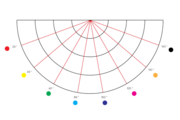
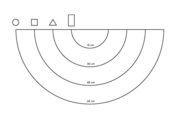
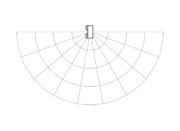
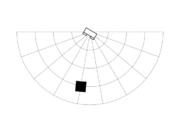
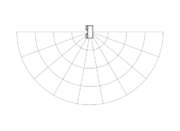
Even though we all had common expertise coming from the Graphic Design department, each adapted to amplify the team.
Some had more interest and expertise in writing the code, while the other was better in for example building the plateau.
Looking back, I figured that my strongest point is coming up with fast ideas. After almost every experiment we needed
to make quick decisions about what our next step would be and what the discovery could add to our project. But what made the
team so great was that we were never alone. We were always working together and talked things over, eventually everybody decided.
Electromagnetic Radiation
Having so little time, also meant that some projects didn’t quit worked out as hoped. For example, my next project working together with Judith and Meike. We hoped to build a Wi-Fi tracker robot. A walking robot that would find the nearest Wi-Fi signal and whenever the signal gets stronger the more excited the robot would get. We were aiming for a humanlike robot to see what reactions we would get from people. To see if people would get just as excited as the robot for instance. We had big dreams and different from before we only had one week. Making the sensor went pretty easy. So we spend more time on building the robot. The robot would exist out of loose ’at home’ parts and a little motor taken from a toy car. But we underestimated the difficulty of making something walk. In the meanwhile, the most important part, the Wi-Fi sensor connected to an Ultra Sonic sensor, broke down at a point that is was too late to order a new one.
Conclusion is that we should have kept it simple and that a toy car would have done the job. We could have showed his excitement by blinking lights, instead of waving arms. Probably had been a much stronger idea to use less humanlike features and still be readable. This could make research more interesting. How many features could we give the robot and what will this result? When would people not react on it anymore and how would people feel about a driving toy car that you won’t be steering yourself? We eventually ended up with a lot of loose parts and big dreams. The mistake we maid was focusing too much on how it would look instead of making it work and see it more as a prototype.
Light Radiation
The next project was done together with Pascale. We have a mutual interest in material and handcraft, what made our project really fun to do. Our different knowledge in craft complementary each other especially during the experiments. That became clear with our first experiment. Fond of screen-printing, I know what ink supply we have at school. Pascale on the other hand has next to her big love for the ceramics, some experience in the photo art. We wondered what would happen if we dip a blank piece of paper in UV - light sensitive ink and put it in a camera obscure. Would it result in a picture? It didn’t, but our curiosity grew and we went on experimenting further by mixing UV- sensitive ink and the materials in the ceramics. It worked! Almost all of the materials changed color holding it in UV-light. First thing noticed was the beauty in it slow changing color and the fact that once taking out of the light it would only last for 5 minutes. This is when we realized that we had more in common as artists. We both feel that the world around us is moving in such a fast past, that we humans can’t simply catch up anymore. We live in a world where we are surrounded by digital screens, where everything is instant and can be saved forever. So we went for the latex material and decided to make a big screen out of it. Together with a glove, tooled with UV-lights, we challenge the perspective and let you experience ephemeral drawing.
We struggled with the choice to let people draw themselves and make it an interactive piece or to put a machine at work. We experimented with a scanner, where we changed the lights for UV-led. We had to modify the scanner to make it go slower so the lights had enough time to change the ink from color. I believe I was more pro for the machine idea. I pictured a machine drawing something very slow, that as a viewer you had to wait and watch to see the result and eventually you probably never would see the whole result, because after 5 minutes every line made would disappear again. A lot similar to the project from Wim Janssen called ‘Black Board-White Cube’. This -not so- typical school blackboard is comprised of a screen that is capable of playing around with the transparency of pigments. He makes use of temperature sensitive ink and a grid of light bulbs. When a light bulb is on long enough the ink gets warm and the pigment of the boards changes to white. Throughout the course of the exhibition all possibilities of drawing a cube are investigated, and this in one continuous action without lifting the chalk and without retracing an already existing line. A mathematical impossibility. This odd catalogue of incomplete cubes plays on the tension between the two- and three-dimensional. The movement is so minimal that the viewer wonders if he's dreaming or if the components of the board have actually changed. ‘Black Board-White Cube’ questions our perception as well as our expectations with regards to audiovisual media. Wim Janssen was invited for a short presentation starting this assignment and theme of light radiation. We eventually went for the interactive piece. We didn't want to make our piece look too much like the one from Janssen and because we ourselves felt the joy playing with this canvas we figured others would too. This project made me think more about the concept of motion and leaded to my next project.
Patterns
Being a dancer movement is a very important accept in my life. Something that always felt lacking in my schoolwork. In some way, I just couldn’t find a proper way to merge my design with movement. I just didn’t see the possibility’s and it felt forced when I tried to. But I discovered that even though most of my work has bin 2D, movement has always been there. Simple example, when I make a drawing I subconscious give it the impression that it is moving. And to enhance this even more I did a course at Animation in my second year. I was most interesting in learning the old way of animation where every step is being hand drawn. It is wrong from me to limit it to just body motion. What I didn’t realize is that my knowledge and interest about motion goes further than that. Motion can move you, it can cause different emotions to a person, it can make you sick like motion sickness. What I find most interesting are the kind that bring you in trance like watching the rain drops making their way down the window or the sun shimmering true Luxaflex on the floor. It’s the patterns and repetition that causes the trance which makes u watch longer than probably intended. I’m a dreamer and in these moments it’s almost as if I am being put to stop, no motor functions or even a realization of where I am and what I was doing. A little pause that I can really enjoy sometimes. I found these same qualities in mechanic devises.
I fell in awe with a simple DC motor. To quick comeback at what I said before, this is a great example of how effective starting every project with a workshops was. During this workshop we had to make a speaker out of coper wire, a magnet and a battery. I was so astonished from the simplicity of the mechanic, that it made me do more research. Here I found a similar working object called the DC motor. A simple wire coil is used with a current, generating an invisible electromagnetic field. By placing a magnet underneath the center of the coil, you’ll make the coil turn. Amazing to think that the first electric DC motor was invented in 1832 and is today still in use! The repeating motion and shimmering coper wire makes a beautiful hypnotic illusion. It reminds me of the collision balls with his same physics magic. Any small adjustment changes the experience completely.
I went on letting go the original function of a motor, from now one its only purpose would be to ‘move’ people. To stay in the concept of patterns, I multiplied the wheels so all the different individual motions would make a new pattern. I chose to use nothing more than needed and kept it as ‘naked’ as possible. The beauty for me lies in the simplicity and I wanted people to see how it works. Eventually I didn’t manage to make it work on time. This made me more passionate about continuing it to the next project, our final project.
Final Minor Project
Field of coils
I continued my quest by starting all over again. My biggest mistake before was to link all the wheels together, which made it impossible to detect the error. So first I focused on making one coil work as perfect as possible and therefor reliable. From here on most decisions that I made choosing my material and design where based on function and detail. Because every little thing counted to make sure the coil would turn properly. I also had to make sure that it didn’t require too much power. So size and winding of the coil where very important. It was a true hustle finding the wright small components to keep everything steady on place, but also a big adventure. I discovered Meyer & Blessing, a great store for building model trains. I got most of my parts and facts from here and off course Simon helped me a lot. I’ve been at work like a true craftsman. Crafts require the development of skill and the application of patience. Trying to compose, decompose, understand and master my work. I accomplish the knowledge and self-assurance to play with it. What made me finally start on making the whole piece consisting out of 50 coils.
<br
I still wanted a naked design and this doesn’t mean no decoration. I believe in form follows function. There is enough space to play between the lines of the grid. I don't see them as limits but as possibility's, guide lines. Ask me to draw something on the spot and I would freeze, put a line on paper and I would know where to start. Something I have definitely learned from studding the Graphic Designer Wim Crouwel, also known as The Grid Master.
Different then before I supplied each coil separately with a current. So if one wouldn’t work it wouldn’t affect the others and an error would be easy to spot. Not having to connect the coils with each other gave me the freedom to place the coils facing horizontal on my square tablet. The tablet is made of white plaster for a clean look and extra attention to the coils. Still the Plaster has a great detail in structure when you look closer. Also, plaster is easy to edit and work with. It made it possible to pour all pins and magnets precisely on place. The wires are hidden in the back of the tablet. Thinking back, I would have probably changed that and made them visible too really enhanced the nakedness.
This whole project was a fight of control. Mostly I felt overpowered. Even though I started this project thinking “Wauw, what a beautiful simple piece of technology”. This piece of beauty turned out to be the opposite. The harder I tried to control them, the harder they fought back. As if they had their own life. Just before the exposition, when it still didn’t work ‘perfectly’, I decided to no longer fight and just let them be. To my surprise this worked out perfectly. They did more than just turning and making patterns. They were now interacting, spinning in turns, stopping or letting each other go. It was beautiful to watch and it did exactly what I was hoping for: it made people move!
Funny to think that the reason why I like handmade work so much is because of the imperfections. So why did i work so hard for perfection? I believe i had to master it so i can play with it. Handcrafted work leaves marks behind, these marks are almost readable and storytelling. Small example; when you take a pen and draw a straight line, you will see a very tiny small dot of thicker ink on the beginning of the line, just because you hold your pen a few seconds longer and/or stronger on paper. That makes me think about Calligraphy. In the old art of calligraphy, they use this to their advantage. Calligraphy is the art of giving form to signs in an expressive, harmonious and skillful manner. By pressing the pen/brush harder and softer on paper u create a contrasted letter that’s thicker and thinner on the right places. This creates readability and makes beautiful decoration. To get back to Sennett: "Craftsmanship is a relationship between hand and head". As the artist you have the choice to keep practicing and fight as much as you can for perfection or come to the conclusion that it’s better to simply embrace these imperfections and utilize them. It took me awhile, but that is exactly what i did.
I analyzed peoples respond during my work process. Before people mostly wondered about how it all worked and kept their distance. Up to now, this type of research was mainly done at school, with only my classmates and teachers present or after the watcher was informed about what it was going to do. Also it had never really worked perfectly yet. During the exposition, my project was introduced ‘in the wild’ and in an unstructured way. Giving people the time to soak it all in. What happened was that the watcher began bonding with each separate wheel. Where one wheel did nothing, the other was dangling trying its best to turn and some turned perfectly fast. You could see people experiencing joy and even sympathy towards the wheels, trying to give them a little push. Pretty weird for an object with no real human features. A group of researchers from the University of Duisburg Essen in Germany used fMRI and proved that humans can feel sympathy for robot’s and inanimate objects, by showing clips and images of them treated either affectionately or harshly. They found that when participants were shown these videos a region of the brain believed to be involved in emotional responses—activated. Because my work has unpredictable moves and interaction between each other it gave people the feeling that it was alive.
Research plan for graduation
I started my project with the idea to slow things down. I tried to find control over something more simple, made in a simpler time. We live in a fast past world. Traffic, machine going fast around us. Compare to them we go slow motion. One push on the button and things happen automatically. It’s one update after the other. But how does it really work, can you make it stop just as well start? We live in a time where the idea of machines taking over the world isn’t that fiction anymore.
I’m not really afraid of machines and neither am I against them. But I like to see how things work and the more technology is improving the harder it is to see. Literally, it is almost impossible to open up your own Macbook or Iphone since 2015 or so. It starts with new screws that need a special kind of screwdriver, if.. there are any screws in it. Once opened, the parts are so small and hidden that you wouldn’t know what is what. These days if something is broken you take it to the shop and if your warranty is expired, you throw it away and buy a new one, because fixing is almost as expensive as buying. And they can make it this expensive because people don’t learn to fix things anymore. Very simple things, such as a flat bicycle tire. Replacing things is easy and we have almost no choice if we want to keep up with our fast world.
I fell in love with the DC Motor, not just because of its beauty, but because it is hard to believe that something so simple is still in use nowadays. Still this simple piece of technology wasn’t so easy for me. You could say that I lost my control over them. I wanted to be the one who decided when and how fast they would turn. If I had spread the coils out more then I probably would have managed that. But in exchange I made a negotiable piece of work. Work that makes you think about what I am trying to explain to you right now. Machines taking over the world. Therefor I call it the ‘Field of coils’, as in stop and smell the roses.
For my research plan I really want to go deeper on this subject; what motion can do with people. I’m not sure if I would continue this with the coils or try something new. I do believe there is more in this project that I can extend. I would start by making different prototypes and test these ‘in the wild’. For example, I would start with the coils instead something totally new. I would start with one coil and later perhaps two interacting coils. To see what I can get more out of it. Things like surrounding could already make a big difference. I would study people’s behavior towards it. I believe this would bring better results, then starting to read about researches done by others. Just like with the workshops, it would result a better work flow for me.
There is this idea I have been playing around with in my head for a while now. In appearance different but I think it could fit perfectly in the same concept. Before the minor I was working on making my own paper. You can make paper by recycling old paper or textile to pulp and pour it onto a screen, till all water has left the pulp. Then you press and let it dry. Normally you make a sheet of paper exciting out of one color. But my goal was to pour an extra layer into the paper such as a simple shape of text. Not like printing onto the paper, but really put into the paper. So the image would be visible from both sides. I succeeded in this, but the shape could never be more difficult than a square or circle. I tried using templates, but those always kept sticking to the screen and ruined the shape it had made.
Beginning the minor I immediately came up with the idea to use a plotter. The whole process of making the paper was so much more interesting to me than the outcome of it. Every step changed the outcome of the sheet. During the pouring the colors are at their brightest and the shape at his best. After all the water has dripped out, the paper looks thinner and transparent. Then you have to press and all shapes will stretch out, even color could mix. I wonder if I can make this plotter pour the pulp, it would be more precise then me and it wouldn’t need a template. You can’t control the pulp, so it wouldn’t be like drawing with a pen, it would never be perfect. I would eventually have to build the plotter myself probably and the idea of that excites me. But until then I already purchased a very old XY Plotter on Marktplaats where I can start testing with. The idea would be that the plotter works without direct orders from people, perhaps it would interact with them or work on his on by collecting data. I do know this also means I will need to work with encoding software. This is not my favorite thing to do and I don’t have a lot of experience in it. But almost like a sign from above, not long ago, there was an open offer at school that I attended. Here we did a quick workshop about encoding an old plotter to illustrator. I believe I can get very interesting Graphic results with this idea. There is also a teacher at the printing station who knows a thing or two about paper making. He suggested a Factory that’s almost a paper-making museum. Which I will definitely visit.
Why a plotter? It has this same hypnotizing way of moving like the coils, that interest me so much. And to see if I can give it the same humanized feeling would be a dare for me. I imagine a big working table as graduation piece, where the plotter is at work as a little factory of its one. Hanging the sheets with outcome to dry. Oké, maybe the plotter would need some help from me, making him hang things can become difficult. But just typing this makes me fantasizing and so exciting.
End statement
I still find it difficult to label myself. I will (hopefully) graduate as a Graphic Designer what is
mostly seen as a commercial occupation and known for making posters, logo’s and fonts.
Which is an outdated image of a Graphic Designer. That together with a minor in Digital Craft
which is autonomous and unknown to most people. Merged together results a lot of confusion.
Every time I mention my practice in these terms I get empty looks full of question marks back
and I find myself stumbling on words trying to explain it. So who am I?
I’m a craftsman. Creating innovative tools and techniques that combine hands-on craft and
digital fabrication. To me craftsmanship means moving forward with evolving technology
and always on the look for new ways of creating. Making before anything. As a studied
Graphic Designer I will always keep my interest in the art and practice of planning and
projecting ideas and experiences with visual and textual content. I find most of my inspiration
from old craftsmanship’s technique and tend to work more as a scientist.Trying something
a hundred times by changing something small in the process and see what comes out.
I feel like nowadays when you see most digitally made objects, you don’t feel a sense of caring.
We live under the shadows of super inventions, with their much too easy pushbutton control.
Since the emergence of computers “generative design” is more accessible. Which is just
another fast method of exploring more design possibilities in shorter time beyond what a
human alone could create. I always disliked these kind of designs. They feel cold to me.
You lose the sense of play that I find in experimenting. Craft is a language of material, origin
and making. To know how and where something is made makes us more invested in it.
It is learning the value of things. William Morris, from the art and crafts movement, say’s so
beautiful bluntly; “production by machinery necessarily results in utilitarian ugliness”. The art of
making beautifully in all kind of ordinary things gates, boats, pottery and so forth, let alone houses
and public buildings, unconsciously and without effort, is slowly disappearing. When anything
has to be renewed among these simple things the only question asked is how little it can be
done for. I believe ornament is important. It’s the idea of play. Therefor ornament is seen as silly,
a distraction perhaps. But it doesn’t sound healthy to me to live in that kind of seriousness
and concentration. We need beautiful surroundings to feel at piece. We can’t live our lives so
thoroughly on importance and concentration, we need the play. Decoration keeps us from getting
old or at least keeps us from getting too old, too fast.
All craftsmanship is founded on skill developed to a high degree. Many hours of experience are
required to become a master carpenter or musician. Various studies show that as skill progresses,
the problems adjust, like the lab technician worrying about procedure, whereas people with primitive
levels of skill struggle more exclusively on getting things to work. At its higher reaches, technique is
no longer an auto-pilot activity; people can feel fully and deeply about what they are doing once they
do it well. At the level of mastery, it will show that ethical problems of craft appear. I experienced these
steps during my project ‘Field of coils’. My first main focus was getting the coils to work, nothing else
seemed to matter. Then when they didn’t work on time I pushed it to the next project. Once at work, the
process and materials seemed much more important and to make it beautiful was my next mission.
Finished, I could step back and reflect on my project. I let my work speak. But what happens if we stay
on the primitive level of skill, where our only problem will be to make things work? And what would these
developments mean for the future of both digital and handmade craft? According to Dries Verbruggen,
from design studio Unfold, that question won’t even matter. Verbruggen believes we’re on the cusp of the
post-digital era – a time when distinguishing between the digital and analogue ways of thinking will no longer
be relevant. Instead, he says, the two will be so irreversibly intertwined that we won’t even notice a divide.
"The digital, as a very dedicated thing, will just dissolve into the real world," Verbruggen predicts.
I’m not sure if this thought scares or relieves me. But whit my work I want to make this subject negotiable.
I believe it’s possible to have a sort of mutual relationship between humans and machines. In a way that you can keep the beauty.

